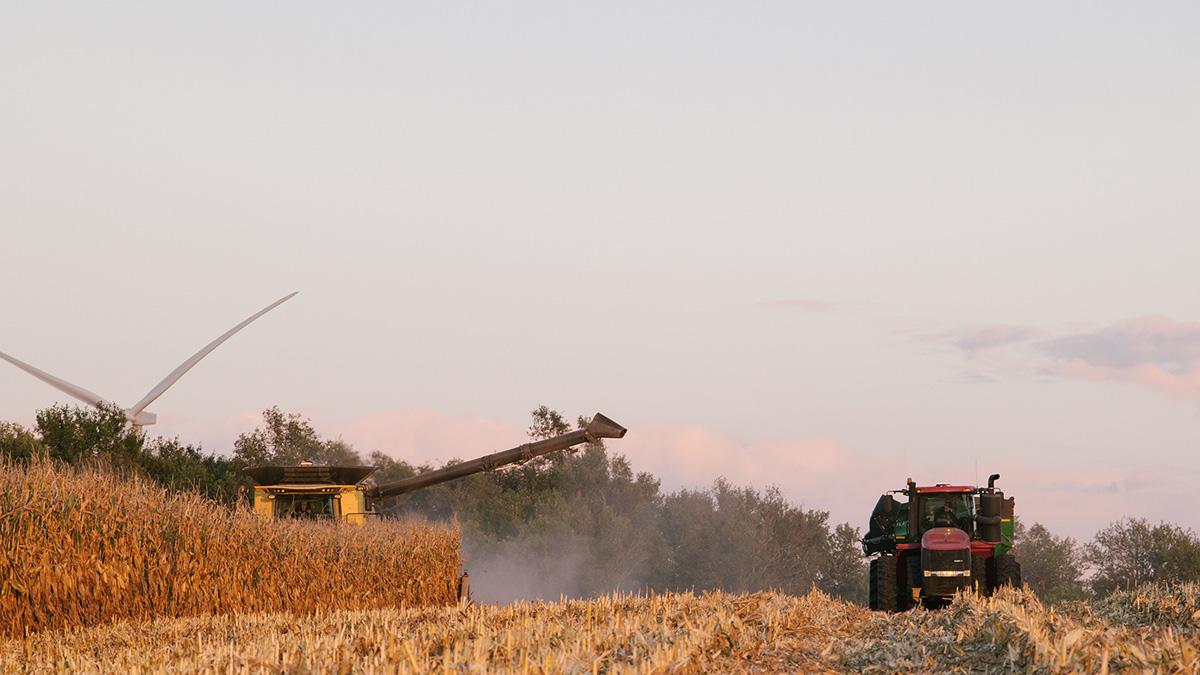Hannah Borg/realagstock.
Net farm income in Nebraska is projected to remain nearly unchanged from 2021 to 2022, at around $8 billion according to a new report produced in collaboration between the University of Nebraska-Lincoln’s Center for Agricultural Profitability and the University of Missouri’s Rural and Farm Finance Policy Analysis Center (RaFF).
The fall 2022 Nebraska Farm Income Outlook report projects a growth of $4.7 billion in crop and livestock receipts, which were countered by a $3.2 billion increase in production expenses and a $900 million decline in government payments. The expected flat net farm income in Nebraska differs from the national outlook, which projects a 6% increase in total U.S. net farm income, largely due to the difference between state and national livestock receipts. While Nebraska livestock receipts are projected higher for 2022, they are concentrated in meat animals, particularly beef cattle, while greater gains nationwide include larger projected increases in dairy and poultry. The report includes the impact of weather, geopolitical conflict and other factors on net farm income.
“Farm income projections for 2022 that are on par with the 2021 record levels provide an optimistic picture of the sustained performance and financial strength of the farm sector,” said Brad Lubben, Extension Policy Specialist and the primary Nebraska collaborator on the research.
However, Lubben mentioned that there are still unknown variables. “The current projections for 2022 could prove to be overly optimistic as harvest yields are assessed and the full impacts of drought are better estimated,” he said.
Key findings of the report include:
- Crop receipts are projected to increase by $2.3 billion in 2022. Despite declines in area, yield and production due to drought and other factors, strong commodity prices pushed corn receipts to rise by $1.1 billion. Soybean receipts were 28% higher compared to 2021 while wheat receipts decreased by $4.5 million from 2021.
- Livestock receipts are expected to increase by $2.4 billion in 2022, with cattle and calves receipts increasing by $2.2 billion over 2021 and receipts for hogs and pigs increasing by $53 million. Dairy, poultry/eggs and other livestock receipts are projected to increase by a combined $202 million.
- Feed expenses are forecast to rise by $1.2 billion from 2020 to 2022. Fuel and oils expenses increased $200 million in 2022. Export restrictions, high natural gas prices and production disruptions contributed to record fertilizer expenses.
The report provides in-depth state- and regional-level insights, which equip industry stakeholders and policymakers with information to understand the state-level impacts of economic factors, weather-related forces and policy initiatives.
The report is produced using an economic model developed by RaFF, which is fed by the latest USDA farm income data and data from the University of Missouri’s Food and Agricultural Policy Research Institute. While 2021 data is subject to adjustment in subsequent publications, net farm income projections for 2022 and beyond can give readers a sense of potential changes in Nebraska’s agricultural production expenses and receipts.
“RaFF’s state-level insights are critical for decision-makers,” RaFF interim director Scott Brown noted. “By understanding how farmers’ and rural communities’ incomes are impacted by economic factors, sound decisions on changes in programs and policies can be formed.”
The Nebraska Farm Income Outlook is available on the Center for Agricultural Profitability’s website, https://cap.unl.edu/farm-income. A webinar covering the report’s findings will be held at noon CT on Oct. 6. Registration is free at https://cap.unl.edu/webinars.
